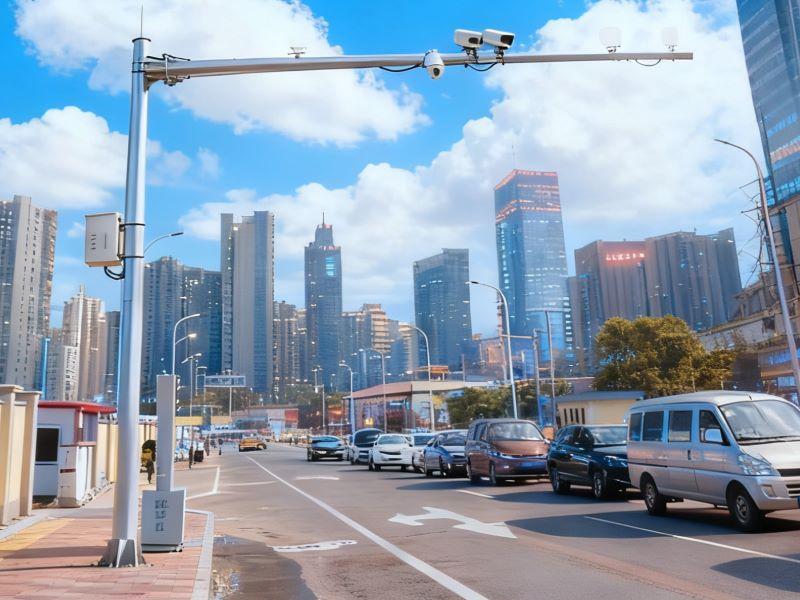Surveillance poles are widely used in daily life and are found in outdoor locations such as roads, residential areas, scenic spots, squares, and train stations. When installing surveillance poles, there are issues with transportation and loading, and unloading. The transportation industry has its own specifications and requirements for certain transport products. Today, steel pole company Qixiang will introduce some precautions regarding the transportation and loading, and unloading of surveillance poles.
Transportation and loading and unloading precautions for surveillance poles:
1. The truck compartment used to transport surveillance poles must have 1 m-high guardrails welded on both sides, four on each side. The floor of the truck compartment and each layer of surveillance poles must be separated by wooden planks, 1.5 m inboard of each end.
2. The storage area during transportation must be flat to ensure that the bottom layer of surveillance poles is fully grounded and evenly loaded.
3. After loading, secure the poles with wire rope to prevent them from rolling due to fluctuations during transportation. When loading and unloading surveillance poles, use a crane to lift them. Use two lifting points during the lifting process, and lift no more than two poles at a time. During operation, avoid collisions, sudden drops, and improper lifting. Do not allow the surveillance poles to roll directly off the vehicle.
4. When unloading, do not park on a sloped surface. After unloading each pole, secure the remaining poles. Once a pole has been unloaded, secure the remaining poles before continuing transport. When placed at the construction site, the poles should be level. Securely block the sides with rocks and avoid rolling.
Surveillance poles have three main applications:
1. Residential areas: Surveillance poles in residential areas are primarily used for surveillance and theft prevention. Because the surveillance site is surrounded by trees and densely packed with houses and buildings, the height of the poles used should be between 2.5 and 4 meters.
2. Road: Road monitoring poles can be categorized into two types. One type is installed alongside highways. These poles are over 5 meters tall, with options ranging from 6, 7, 8, 9, 10, and 12 meters. The arm length is typically between 1 and 1.5 meters. These poles have specific material and workmanship requirements. A 5-meter pole typically requires a minimum pole diameter of 140 mm and a minimum pipe thickness of 4 mm. A 165 mm steel pipe is typically used. The embedded components for the poles during installation vary depending on the soil conditions at the site, with a minimum depth of 800 mm and a width of 600 mm.
3. Traffic light pole: This type of monitoring pole has more complex requirements. Generally, the main trunk height is less than 5 meters, usually 5 meters to 6.5 meters, and the arm ranges from 1 meter to 12 meters. The pipe thickness of the vertical pole is less than 220 mm. The required arm monitoring pole is 12 meters long, and the main trunk must use a pipe diameter of 350 mm. The thickness of the monitoring pole pipe also changes due to the lengthening of the arm. For example, the thickness of the monitoring pole is less than 6 mm. Road traffic signal poles are welded by submerged arc welding.
Post time: Oct-22-2025







